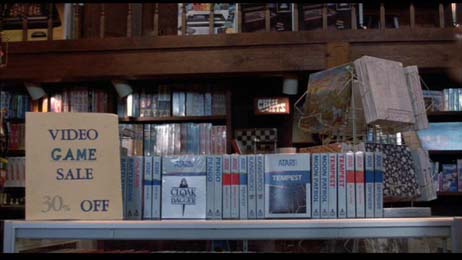|
|
Cloak & Dagger
|
Name:
|
Cloak & Dagger |
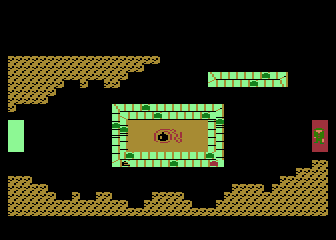 |
| Company: | Atari | |
|
Model #:
|
N/A | |
|
Programmers:
|
Dave Comstock & Hal Canon |
|
| Year: | 1984 | |
|
Released?
|
No
|
|
|
Notes:
|
Although the 'prototype' shown in the movie was for the Atari 5200, only a prototype for the Atari 8-bit version exists. |
Cloak & Dagger. There probably isn't a classic gamer alive that hasn't heard of this legendary prototype. Featured in the movie of the same name, Cloak & Dagger was prominently shown being played throughout various parts of the movie on the Atari 5200. For years, many a gamer searched in vain for a copy of this game, only to be told that it never really existed. For you see, the cartridge used in the movie was only a mock-up, and a real home version of Cloak & Dagger didn't exist... That is, until now!
The Arcade Game
First a little history on the arcade version of Cloak & Dagger. The coin-op game Cloak & Dagger, was programmed by Russell 'Rusty' Dawe and released by Atari in 1983. Originally called Agent X, the name was changed to Cloak & Dagger shortly before the game was released to tie into the movie (a handful of Agent X prototypes exist). You control Agent X (Jack Flack), who must infiltrate the hideout of the evil Dr. Boom and recover the secret plans he has stolen. Agent X must progress through a series of 32 floors to find Dr. Boom's hidden lair and destroy his underground bomb factory.
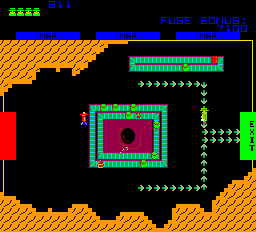
Each floor of the hideout contains a series of conveyer belts. Riding along the conveyer belts are bombs, which come in two colors, green and red. Green bombs are not active and can be picked up for points, however red active bombs are deadly to the touch. Green bombs turn into red bombs after they pass though the bomb-arming device, so Agent X must be careful near these. Also on the conveyer belts are mystery boxes and map pieces. Mystery boxes have a random power up in them (bonus points, speed up, slow down, or an extra life), while map pieces (one each level) show Agent X the way through the land mine field (more on this later).
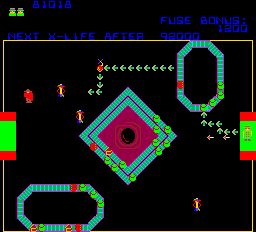
At the center of each of the rooms is a giant bomb. After a set period of time, the fuse of the bomb will light, slowly burning until the bomb detonates. When the bomb blows, Agent X only has a second or two get out of the room before he is killed. Agent X can light the bomb himself for big bonus points, but doing so is risky.
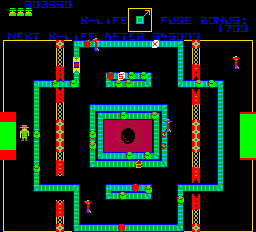
Every four levels Agent X will come to a mine field. Mine fields look like large empty rooms, except that they are filled with invisible land mines. The land mines are only reveled when Agent X is standing right next to them. There are only a few safe paths through the mine field, and one will be shown if Agent X has collected all the pieces of the map on the previous three levels. If a piece of the map was missed, the path through the mine field will only be partially shown.
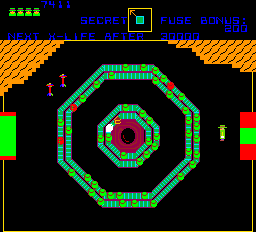
Each level also contains a number hazards that can kill Agent X. Robot guards roam the levels and will shoot at Agent X if they detect him. Likewise, giant eyeballs found in the caverns will shoot a deadly death ray at Agent X if he gets too close (this ray also destroys Agent X's shots). Forklifts, which move bombs from one conveyer belt to another, roam the level and will reflect Agent X's shots back at him (nothing worse than killing yourself). Box crushers and acid pits also make Agent X's journey a hazardous one.
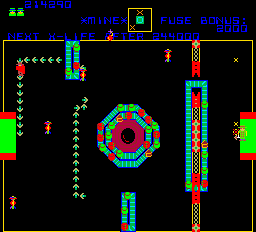
Once Agent X makes his way to the bottom of the factory (on level 33), he must grab the secret plans, and confront the evil Dr. Boom himself. After grabbing the secret plans (and killing Dr. Boom), Agent X must make his way back up through the factory to the surface and escape. However now each level contains a new enemy called a node monster, which emanate from the giant hole in each level where the bomb exploded. Also perusing Agent X to the surface is the Super Guard. The Super Guard is a lightning fast robot which appears after a short period of time. The Super Guard is indestructible and must be avoided at all costs. Once Agent X has made it to the surface you will be treated with a glimpse at the top secret plans.
The Movie
In 1984 Universal Pictures released a movie titled Cloak & Dagger. The movie revolves around a young child named Davey who witnesses the murder of an FBI agent at the hands of Russian spies. Before the agent dies, he hands Davey an ordinary looking game cartridge (Cloak & Dagger for the Atari 5200) which contains top-secret data that will only appear when a certain score is reached (1,329,542). Unfortunately no one believes Davey's story, so it's up to him and his best friend Kim to keep the game out of the hands of enemy.
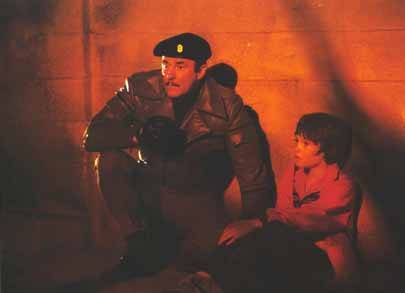
Although the game cartridge shown in the movie looks like a real game, it is in fact a fake. The real home port had not been started by the time the movie was filming, so they created a mock up cartridge shell to use through out the movie. When the game actually had to be played, they piped in screens from the arcade game to the TV so it looked like the game was being played on a real 5200 (although the graphics were obviously beyond the 5200's capabilities). This was a marketing ploy by Atari to increase the visibility of the 5200 system.
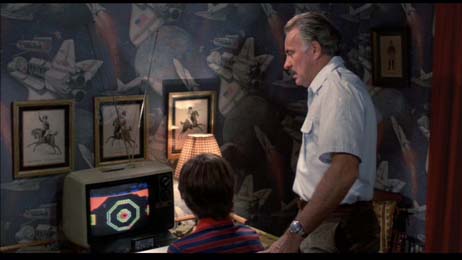
Throughout the movie boxes of Atari products are prominently displayed. In the below picture you can see boxes for never released games like Battlezone for the 5200 (all the way to the left next to the sign), Tempest for the 5200, and Tempest for the 2600 (next to the Moon Patrol boxes). Of course you can also see the box for Cloak & Dagger, but it's obvious that it is just a mock up as it doesn't even have the appropriate 5200 game artwork (just a weird C&D logo). Click on the picture to see a larger version.
The original game that was to be used in the movie was Donkey Kong, but was changed after Atari came to them with a spy game which matched the theme of the movie. The original name for Cloak & Dagger was Agent X, but this was changed to match the movie title (there is a reference to Jack Flack being called Agent X in the movie).
The Prototype
After the success of the arcade game and movie, Atari ordered a home port of Cloak & Dagger to be created. Originally assigned to programmer Hal Canon, Hal left the project after a short time, so Dave Comstock was assigned to take over the writing the game. First for the Atari 8-bit computer line, then for the Atari 5200 (this was a common practice). Working closely with Rusty Dawes (programmer of the arcade version), Dave fired up his modified Atari 800 and started programming.
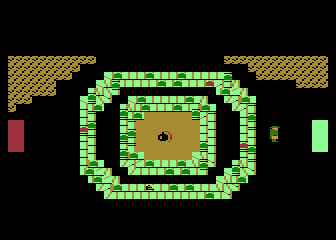
However after working on the project for a few weeks it became apparent to Dave that in order to make the game as close to the arcade version as possible, the game would have to be larger than 16K (which was the standard at the time). After appealing to Atari's management, Cloak & Dagger was authorized to become the first 32K home game in Atari's history. Having an extra 16K of memory to work with allowed Dave to add more of the arcade game's features to the home version. There were going to be no compromises made with this version!
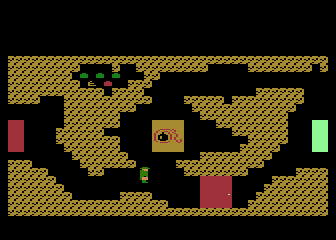
Unfortunately for Dave, after completing roughly 50% of the game the great game market crash of 1984 hit. Staggering from huge losses, Atari laid off most of the home computer division and cancelled the game. Sensing the end was near, Dave wisely took home the latest version of his game, saving it from almost certain loss. After the layoffs Dave, being the dedicated programmer that he was, kept working on Cloak & Dagger, adding new features and cleaning up various bugs. However after a few months Dave got a new job, the game was put into storage, and the world moved on...
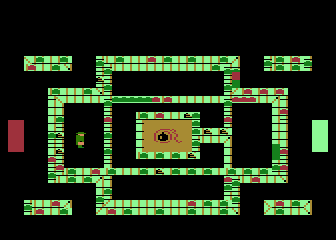
Although Cloak & Dagger was around 50% complete when work was stopped, the game is far from playable. The level layouts are done and Agent X can move around each level, but that's about it. There are no enemies, no forklifts, and Agent X can not shoot or light bombs. The famous elevator sequences are also missing from this prototype, although Dave did plan to add them in. Also missing from this prototype is the status display that would be displayed at the top of the screen, this makes the screen look oddly squished. One compromise that Dave did have to make is that he was forced to remove the diagonal conveyer belts due to technical reasons. This doesn't harm the gameplay, but it does make some of the boards look a little strange.
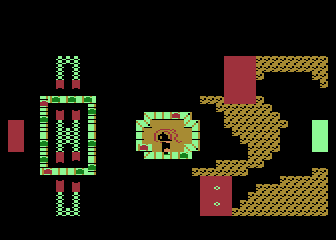
So what can you do in this prototype? Agent X can walk from one side of the screen to the other, moving from level to level. If Agent X touches something that would normally kill him he will turn black, but he will not die. Once Agent X makes it to the 32 level, the game wraps around and starts at level 1 again. The conveyer belts complete with bombs are fully functional, although there are some slight graphical glitches now and then. The bubbling acid pits, mine fields, and box compressors are also present in this version.
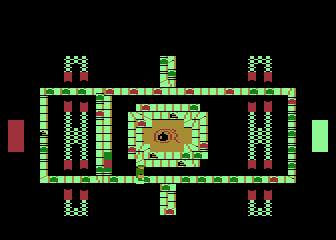
Recently a disk containing a mockup of the elevator intermission was discovered hidden on a disk in the collection of former Atari graphics artist Jerome Domurat. While the colors seem a little off, the screen would have fit quite nicely inside the game. The only problem is, according to Dave no intermission graphics were ever created. How or why this graphic exists is a bit of a mystery. Perhaps Atari's management needed a mockup for a catalog or perhaps an artist was playing around in his spare time? The artist behind this mockup is also unknown, and isn't Jerome despite being on one of his disks. Special thanks to John Hardie and the National Videogame Museum for finding this disk and releasing it to the public.
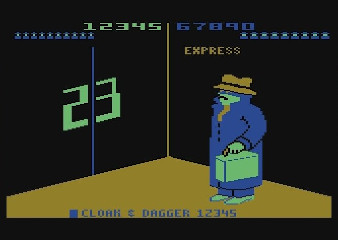
Although Cloak & Dagger was never completed, the prototype shows great promise. Dave really knew his stuff, and it's obvious that a lot of hard work was being put into this game. Chalk up another victim of the gaming crash...
| Version | Cart Text | Description |
| 7/??/84 | Cloak & Dagger | 50% Complete |

